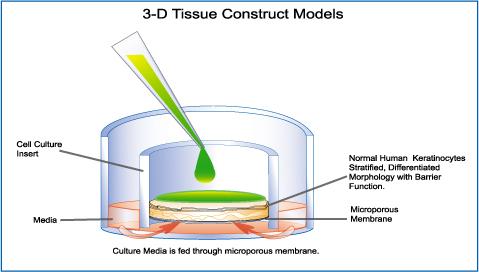The determination of a possible corrosive or irritative potential of certain products and ingredients is necessary for their classification and labeling requirements. Reconstructed skin as a model system provides fundamental advantages to single cell culture testing and leads to promising results as shown by different validation studies. “Epidermal-Skin-Test” (EST-1000) is an advanced form of former tests using reconstructed epidermis. This fully grown epidermis consists of proliferating as well as differentiating keratinocytes. EST-1000 shows a high comparability to normal human skin as shown by histological and immunohistochemical data. Characteristic markers (KI-67, CK 1/10/5/14, transglutaminase, collagen IV, involucrin, beta 1 integrin) can be identified easily. The main focus of this work was to characterize EST-1000 especially with respect to its barrier function by testing several substances of known corrosive potential. Skin corrosion was detected by the cytotoxic effect of the substances on a reconstructed epidermis after short-term application to the stratum corneum. The effect was determined by standard MTT assay and accompanying histological analysis. Hence EST-1000 shows a very high predictive potential and closes the gap between animal testing and the established full-thickness model Advanced-Skin-Test 2000 (AST-2000).
